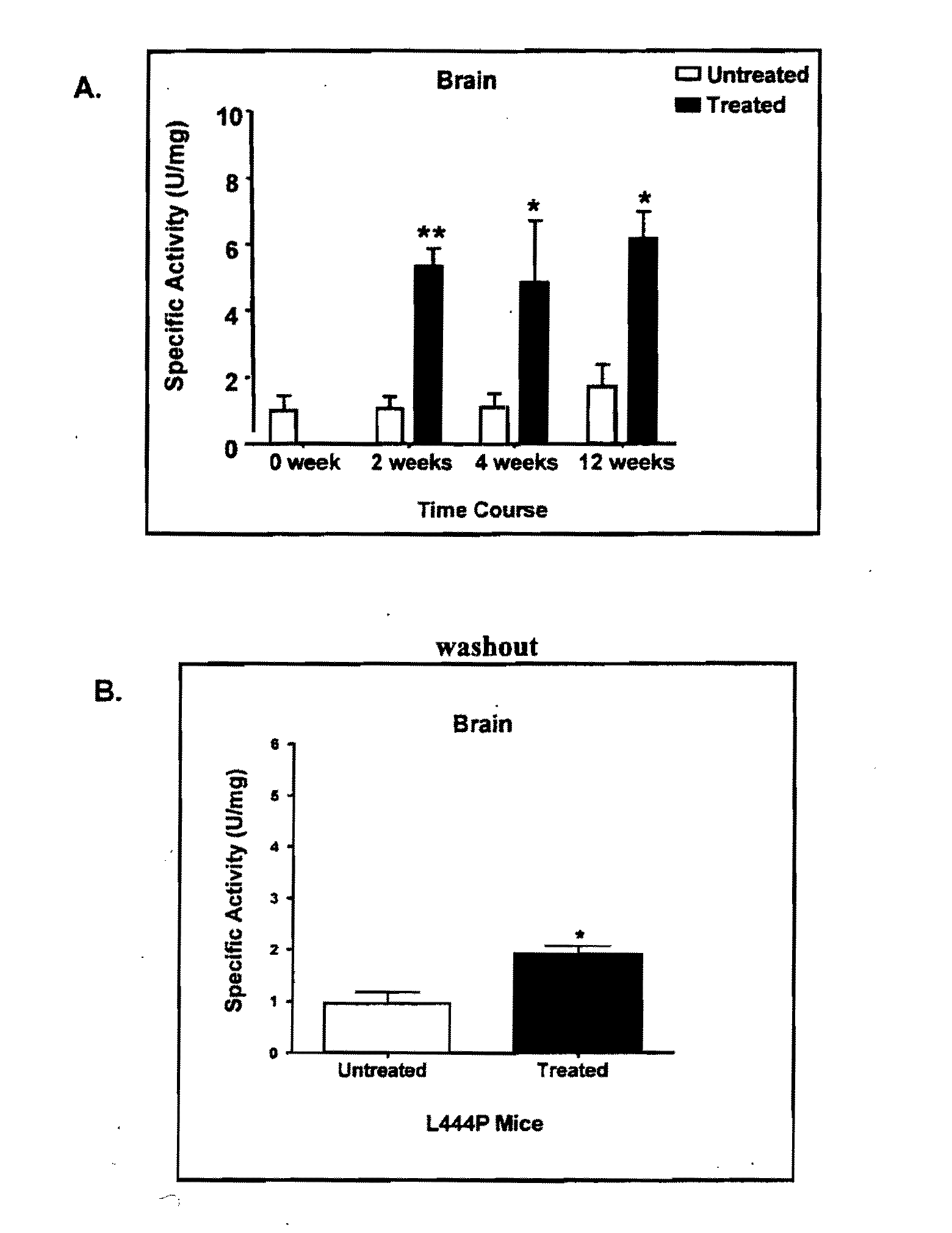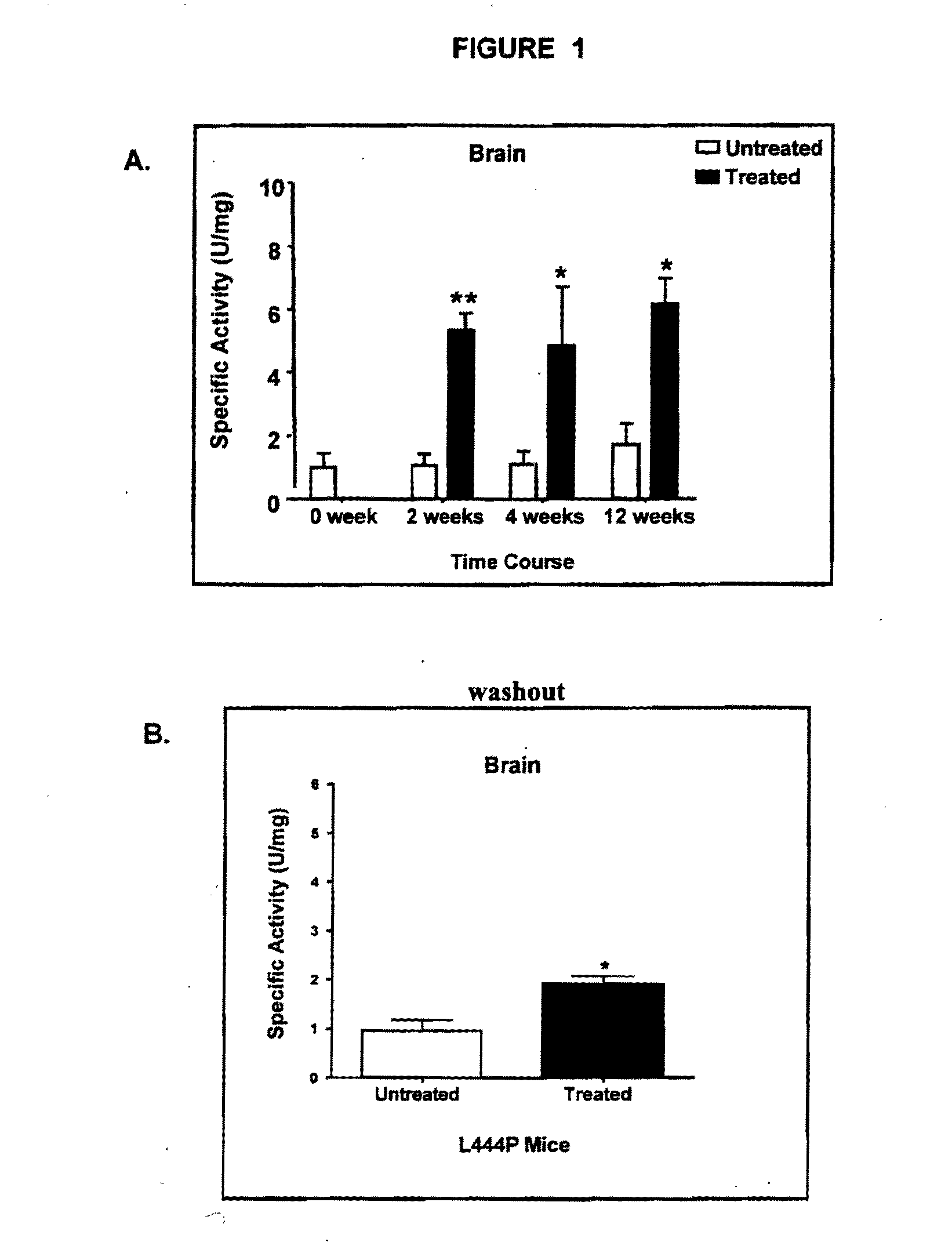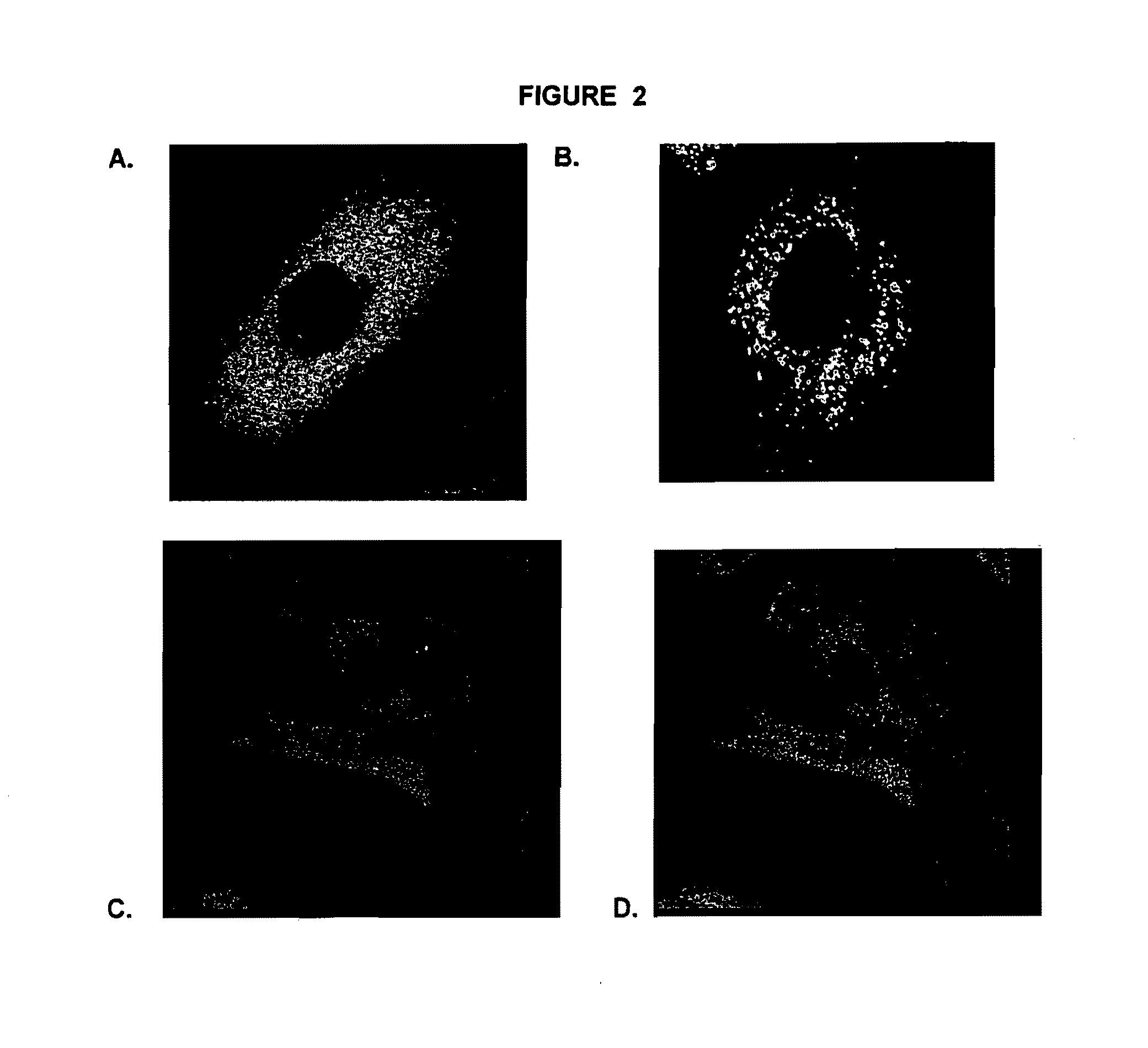Treatment of CNS disorders associated with mutations in genes encoding lysosomal enzymes
a technology of lysosomal enzyme and gene, applied in the field of treatment of cns disorders associated with mutations in genes encoding lysosomal enzyme, can solve the problems of all populations at risk of developing neurological disorders, and achieve the effect of optimizing in vitro hydrolase activity
- Summary
- Abstract
- Description
- Claims
- Application Information
AI Technical Summary
Benefits of technology
Problems solved by technology
Method used
Image
Examples
example 1
Determination of Increased Gba Activity in the Brains of L444P Transgenic Mice Treated with Specific Pharmacological Chaperones
[0244]L444P is a mutation associated with Types 2 and 3 Gaucher disease. L444P transgenic mice (homozygous for human L444P mutated Gba on a glucosylceramide synthase null background) exhibit a deficiency in Gba activity in the brain. However, due to the disruption in the glucosylceramide synthase gene, these mice do not exhibit accumulation of GluCer in e.g., macrophages. Concomitant glucosylceramide synthase disruption is necessary, since previously made L444P transgenic mice died within 3 days of birth due to impaired permeability barrier function in the epidermis.
[0245]In this experiment, the L444P transgenic mice were treated with isofagomine or C-benzyl-isofagomine and surrogate markers were measured at 1, 3, 6 and 12 months to determine efficacy of the chaperones. In addition, mice in a “washout” period of 2 weeks of non-chaperone treatment following 4...
example 2
Restoration of Disrupted Lysosomal Trafficking in Gaucher Fibroblasts
[0256]Although N370S Gaucher fibroblasts (from a human patient) do not demonstrate an accumulation of substrate (i.e., GluCer) in the cytoplasm, these fibroblasts exhibit abnormal lysosomal protein and Gba staining compared with wild-type fibroblasts. Treatment of N370S fibroblasts with pharmacological chaperone isofagomine increased the amount of Gba seen in the lysosome and restored a normal lysosomal staining pattern to the cells.
Methods
[0257]Cell culture. N370S fibroblasts (DMN89.15) were cultured in DMEM with 10% FBS and 1% penn / strep at 37C with 5% CO2. Wild-type fibroblast cell line CRL-2097 form a healthy individual was used as a control. Cells were sub-cultured from 10 cm plates into 12-well plates with cover slips. Cells from one confluent 10 cm plate were diluted in 38 ml of culture medium. Isofagomine or C-benzyl-isofagomine were added from a 10 mM stock solution (5% DMSO) to each well of a 12-well plat...
example 3
Increase of Polyubiquinated Proteins with Chaperone Treatment in Gaucher Fibroblasts; Restoration of the Proteasome Degradation Pathway
[0270]Anti-polyubiquitinated protein (PUP) and anti-Gba labeling of healthy human fibroblast was compared with that in fibroblasts from a Gaucher patient having the L444P Gba mutation, and Gaucher patient fibroblasts having the N370S Gba mutation.
Methods
[0271]Cell culture. L444P Gaucher fibroblasts (cell line GM10915); N370S Gaucher fibroblasts (cell line DMN89.15); and fibroblasts from a healthy individual (CRL-2097) were cultured in DMEM with 10% FBS and 1% PS at 37C with 5% CO2. Cells are sub-cultured from 10 cm plates into 12-well plates with sterile cover slips. N370S cells from one confluent T-75 flask were diluted 1:6 and cultured for another 4 days.
[0272]Chaperones isofagomine or C-benzyl-isofagomine are added from a 10 mM stock solution (5% DMSO) to each row of a 12-well plate at the following concentrations:
[0273]C-benzyl-isofagomine—untrea...
PUM
| Property | Measurement | Unit |
|---|---|---|
| pH | aaaaa | aaaaa |
| pH | aaaaa | aaaaa |
| pH | aaaaa | aaaaa |
Abstract
Description
Claims
Application Information
 Login to View More
Login to View More - R&D
- Intellectual Property
- Life Sciences
- Materials
- Tech Scout
- Unparalleled Data Quality
- Higher Quality Content
- 60% Fewer Hallucinations
Browse by: Latest US Patents, China's latest patents, Technical Efficacy Thesaurus, Application Domain, Technology Topic, Popular Technical Reports.
© 2025 PatSnap. All rights reserved.Legal|Privacy policy|Modern Slavery Act Transparency Statement|Sitemap|About US| Contact US: help@patsnap.com



